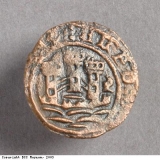Portugal
Portugal started the European slave trade with Africa. Prince Henry the Navigator of Portugal sent a trading expedition to Africa, to explore the little known continent, in 1441. By 1444, a ‘cargo’ of 235 enslaved Africans had been brought to Lagos in Portugal. The Portuguese were using enslaved Africans on sugar plantations in Madeira, a Portuguese island off the west coast of Africa, by 1460. They built the first slave fort in 1481, on the coast of modern Ghana. This was Elmina Castle, the headquarters of the Portuguese slave traders. In the early 17th century, Portugal was a major trader in enslaved Africans. At this time, it held the asiento, or contract, to supply the Spanish colonies with slaves. This meant that as well as buying their own slaves, the Portuguese were buying slaves for Spanish owned plantations. This added to the overall number of slaves which Portuguese ships carried. Records show the total figure to be 4,650,000 enslaved Africans.
Lisbon, in Portugal, was the major port involved in the Portuguese slave trade. From here, ships went to West Africa and took enslaved Africans across the Atlantic Ocean to the Portugese-owned colony of Brazil. Many of the slaves were carried to plantations and mines in Brazil. Between 1721 and 1730, 150,000 slaves were taken to Brazil. Between 1801 and 1810, 200,000 were taken.
The Portuguese city of Porto made a strong brandy especially for the Africa trade. Three ‘anchors’ (a measured unit) of it would buy a young male slave.
Portugal traded with other European countries as well as with Africa. Bristol traders were buying items such as wine (especially port wine) from their Portuguese trading partners . Portuguese coins found in the mud of the Floating Harbour in Bristol show that Bristol merchants were trading with Portugal. Three Portuguese ships are recorded as coming into Bristol together in 1309 carrying figs and raisins. By about 1390, Portugal was a major trading partner .



